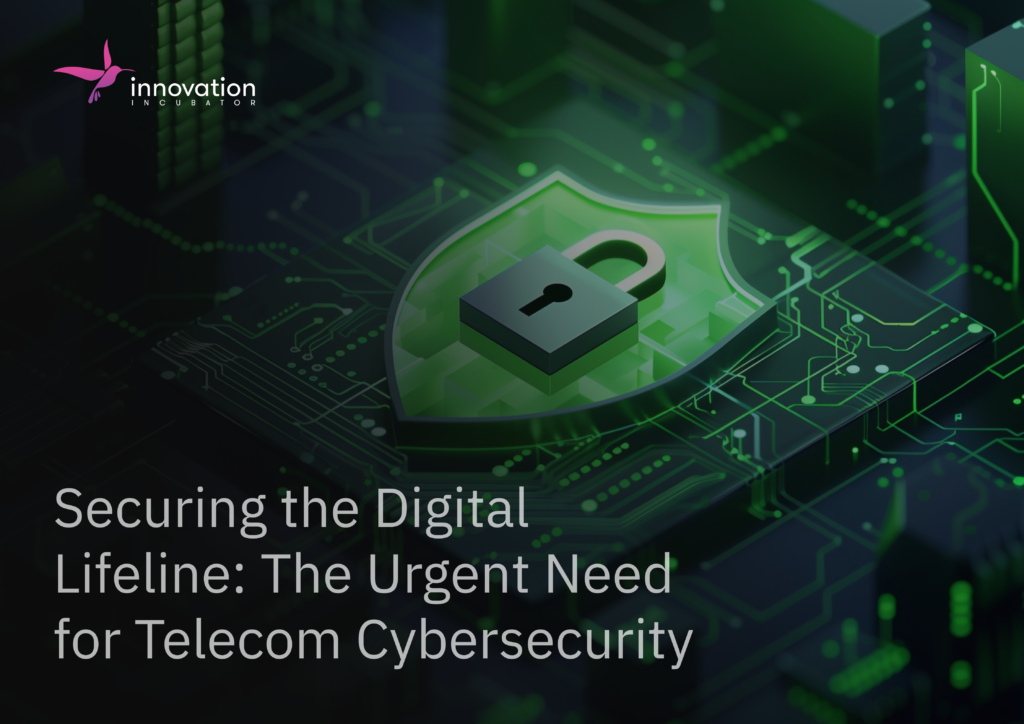In an era defined by seamless connectivity and the proliferation of digital services, the telecom industry stands as a critical infrastructure underpinning modern society. From mobile communications to broadband internet and the burgeoning Internet of Things (IoT), telecom networks are the lifeblood of our digital world. However, this interconnectedness also presents a vast attack surface for cybercriminals, making robust cybersecurity a paramount concern. This blog post delves into the intricacies of cybersecurity in the telecom sector, exploring its fundamental principles, best practices, and the evolving threat landscape.

What is Cybersecurity?
Cybersecurity, in its essence, is the practice of protecting systems, networks, and data from digital attacks. In the telecom context, this encompasses safeguarding the entire infrastructure, from core networks and base stations to customer premises equipment and cloud-based services. It involves implementing a comprehensive set of technologies, processes, and controls to prevent, detect, and respond to cyber threats.
Telecom cybersecurity is distinct due to the sheer scale and complexity of the networks involved. These networks handle massive volumes of sensitive data, including personal information, financial transactions, and critical infrastructure control signals. A successful cyberattack can lead to devastating consequences, including service disruptions, data breaches, financial losses, and even national security implications.
What are the 4 P’s of Cybersecurity?
To effectively address the multifaceted challenges of cybersecurity, particularly within the telecom domain, it’s helpful to consider the “4 P’s” framework:
- Protection: This involves implementing proactive measures to prevent cyberattacks. This includes deploying firewalls, intrusion detection/prevention systems, encryption technologies, and access control mechanisms. In telecom, protection also extends to securing physical infrastructure, such as cell towers and data centers, from unauthorized access and tampering.
- Prevention: This focuses on reducing the likelihood of successful attacks by addressing vulnerabilities and raising awareness. This includes conducting regular security assessments, patching software vulnerabilities, and providing security awareness training to employees and customers. In telecom, this also involves implementing secure coding practices for network equipment and applications.
- Perception: This emphasizes the ability to detect and analyze cyber threats in real time. This includes deploying security information and event management (SIEM) systems, threat intelligence platforms, and anomaly detection tools. In telecom, perception is crucial for identifying and responding to distributed denial-of-service (DDoS) attacks, malware infections, and other sophisticated threats.
- Prosecution: This involves investigating cyberattacks, identifying perpetrators, and taking legal action. This includes collaborating with law enforcement agencies, sharing threat intelligence, and implementing incident response plans. In telecom, prosecution is essential for deterring cybercriminals and holding them accountable for their actions.

Cybersecurity Best Practices in Telecom
To maintain a strong security posture, telecom operators must adopt a holistic and layered approach to cybersecurity. Key best practices include:
- Network Segmentation: Dividing the network into smaller, isolated segments to limit the impact of a breach.
- Strong Authentication and Access Control: Implementing multi-factor authentication, role-based access control, and privileged access management to prevent unauthorized access.
- Encryption: Encrypting sensitive data at rest and in transit to protect it from unauthorized access.
- Regular Security Audits and Penetration Testing: Conducting regular assessments to identify and address vulnerabilities.
- Threat Intelligence Sharing: Collaborating with industry partners and government agencies to share threat intelligence and best practices.
- Incident Response Planning: Developing and testing comprehensive incident response plans to minimize the impact of a cyberattack.
- Security Awareness Training: Educating employees and customers about cybersecurity risks and best practices.
- Secure Software Development Lifecycle (SSDLC): Implementing security measures throughout the software development process.
- IoT Security: Implementing robust security measures for IoT devices and networks, including secure device provisioning, data encryption, and firmware updates.
- Cloud Security: Securing cloud-based services and applications by implementing strong access controls, data encryption, and security monitoring.
- Zero Trust Architecture: Deploying a zero-trust architecture that assumes no implicit trust, requiring verification for every access request.
- Operational Technology (OT) Security: Securing the operational technology that controls critical infrastructure, such as base stations and network management systems.
| SECURITY DOMAIN | SPECIFIC MEASURES | BENEFITS |
| Network Security | Firewalls, Intrusion Detection/Prevention Systems (IDS/IPS), Network Segmentation, DDoS Mitigation | Prevents unauthorized network access, detects and blocks attacks, limits breach impact, ensures service availability. |
| Data Security | Encryption (at rest and in transit), Access Control (RBAC, MFA), Data Loss Prevention (DLP) | Protects sensitive data from unauthorized access, ensures data confidentiality and integrity, prevents data breaches. |
| Endpoint Security | Antivirus/Anti-malware, Endpoint Detection and Response (EDR), Mobile Device Management (MDM) | Protects end-user devices from malware and threats, secures mobile communications, manages device security. |
| Application Security | Secure Coding Practices (SSDLC), Web Application Firewalls (WAF), Vulnerability Scanning | Prevents application vulnerabilities, protects web applications from attacks, reduces risk of exploitation. |
| IoT Security | Secure Device Provisioning, Firmware Updates, Network Segmentation for IoT Devices, Strong Authentication for IoT Devices | Secures IoT devices and networks, prevents IoT-based attacks, protects critical infrastructure. |
| Zero Trust | Micro-segmentation, Continuous Authentication, Least Privilege Access | Enhances security by verifying every access request, reduces lateral movement, limits breach impact. |
| Operational Technology (OT) Security | OT-Specific Firewalls, Intrusion Detection for OT, Secure Remote Access for OT, Patch Management for OT Systems | Protects critical infrastructure control systems, prevents disruptions to essential services, ensures operational resilience. |
Different Types of Cybersecurity in Telecom
The telecom cybersecurity landscape is diverse, encompassing various specialized domains:
- Network Security: Protecting the network infrastructure from unauthorized access, attacks, and disruptions.
- Application Security: Securing applications used by telecom operators and customers from vulnerabilities and attacks.
- Information Security: Protecting sensitive data, such as customer information and network configuration data, from unauthorized access, disclosure, or modification.
- Cloud Security: Securing cloud-based services and applications used by telecom operators.
- Endpoint Security: Protecting end-user devices, such as smartphones and laptops, from malware and other threats.
- Zero Trust: A security model that assumes no implicit trust and requires verification for every access request.
- IoT Security: Securing IoT devices and networks from cyberattacks.
- Operational Security: Protecting the operational technology that controls critical infrastructure.
FAQs
- What are the 3 levels of cybersecurity?
- Basic: Fundamental security measures, such as firewalls and antivirus software.
- Intermediate: More advanced measures, such as intrusion detection systems and vulnerability management.
- Advanced: Sophisticated measures, such as threat intelligence, security automation, and incident response.
- What are the 7 layers of cybersecurity?
- Physical Security
- Network Security
- Endpoint Security
- Application Security
- Data Security
- User Security
- Governance and Compliance
- What are the 9 types of cybersecurity?
- Network security.
- Application security.
- Information security.
- Cloud Security.
- Endpoint security.
- Zero trust.
- IoT security.
- Operational security.
- Critical Infrastructure security.
In conclusion, cybersecurity is an ongoing and evolving challenge for the telecom industry. By adopting a proactive and comprehensive approach, telecom operators can mitigate risks, protect their networks and customers, and ensure the continued reliability and security of our digital infrastructure.

